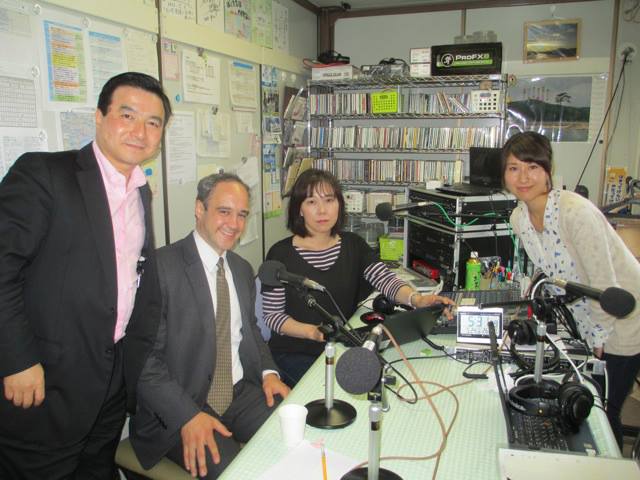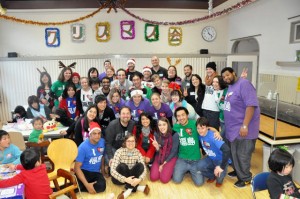JET alum Jim Gannon continues his work on behalf of JCIE in support of Rikuzentakata and other areas
***************
Via the Japan Center for International Exchange’s Facebook page. A nice post about the work that Jim Gannon (Ehime-ken, 1992-94), Executive Director of the Japan Center for International Exchange (JCIE/USA), has been doing in Tohoku on behalf of his organization. Jim is also a member of JETAA USA’s Board of Advisors and the JETAA USA Disaster Relief Fund Committee:
JCIE/USA’s Jim Gannon was in Tohoku last week, where he met with grantee AidTAKATA, an NGO that operates Radio FM Rikuzentakata to bring local news, music, and informational programs to people living in this hard-hit area. The station is the only source of local information for many residents in temporary housing, and it is working to strengthen community ties.
During his visit, the station featured a program with a lawyer who provides advice on the legal issues people in the disaster zone have to cope with (rebuilding regulations, insurance settlements, land titles, etc.). They also briefly interviewed Gannon during the program and took the opportunity to express their gratitude to all of the donors to the JCIE fund.
While on air, a small earthquake struck and the announcer immediately provided information on the epicenter and strength and to reassure listeners.
As part of an occasional series, Sheila Burt (Toyama-ken, 2010-2012) will begin profiling JETs who are or were in some way involved with rebuilding efforts in the Tohoku region. The inaugural post is about Jessie Zanutig (Gunma-ken, 2009-12), who founded 3,000 Letters to Japan, an international letter exchange project aimed at lifting the spirits of students who are living in the communities hardest hit by the disaster. Burt is currently a freelance journalist and English teacher in Matsuyama City, Ehime-ken. Read more of her reporting at her blog, Stories from the Inaka.
Jessie Zanutig was in the middle of celebrating her junior high school students’ graduation at a small restaurant in Kawaba Village, Gunma Prefecture, when the earthquake struck. Buildings in her tiny mountainous town in northern Gunma shook violently, but her town was thankfully safe from the tsunami that was about to ravage several coastal communities in northeast Japan.
As Gunma residents banned together in the next few weeks to send supplies to neighboring Fukushima-ken, Zanutig began to correspond with a Canadian friend who was living in Ishinomaki, one of the hardest hit towns in Miyagi Prefecture, to learn more about the situation. Her friend’s boyfriend, who is Japanese, lost his father in the tsunami and was struggling with the sudden loss of a family member.
“I was in contact with her a lot to make sure she was OK. Her students were having a really hard time,” Zanutig, 28, remembers. “I thought, ‘I want to help but there’s nothing I can do.’ So I asked her, ‘If I just collected a few letters from friends and family, do you have a few students you can give them to?’” Read More
JET alum seeks translators to help with “Rebuilding Tohoku” website project
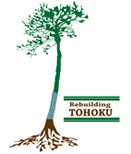 Thanks to Owen Rosa (Iwate-ken, 1999-2002) for sharing info about his project. If you’re interested in helping, read below and contact Owen by registering on the website:
Thanks to Owen Rosa (Iwate-ken, 1999-2002) for sharing info about his project. If you’re interested in helping, read below and contact Owen by registering on the website:
The Rebuilding Tohoku website is dedicated to providing information about the changes taking place in Japan in the post Great Northeast Tsunami and Earthquake era.
- This website is trying to create a medium that consolidates information for all subjects related to the rebuilding efforts including but not limited to energy, politics, economics, tourism and philanthropy.
- The site allows for people to join as members and submit articles (in both Japanese and English), pictures, videos, or documents on various subjects or projects related to rebuilding Tohoku.
- The site also asks for Japanese language speakers to volunteer with translations of articles or project information from Japanese to English in order to provide information in English usually not available outside of Japan.
- The overall goal of the website is to provide access to articles and promote projects outside Japan to potential philanthropists, foreign investors or others interested in supporting the rebuilding efforts.
I am reaching out to current and former JETs to ask for your support in volunteering to translate from Japanese to English or provide any information you know about projects supporting the rebuilding efforts. Thank you for your consideration and if you are interested please go to the website at www.rebuildingtohoku.com and register, thank you.
The website was created and operated by Owen Rosa, a former JET (1999-2002) in Iwate Prefecture.
Tohoku Tomo Update 03.26.13
Wesley Julian (Miyagi-ken, 2008-10) is now in Japan with a small film crew making a video that will share the story of JET alums and others who have made and continue to make a difference in Tohoku, Japan. Below is a video update from Wesley regarding his Tohoku Tomo project:
Tohoku Tomo Update from Philip Holbrook on Vimeo.
JET Alum Establishes “Tsunami Survivor Fund to Save Miyagi”
A new effort started by Miyagi JET alum Canon Purdy:
Welcome to Save Miyagi, a non profit, unincorporated charity organization dedicated to helping Miyagi and Minamisanriku rebuild after the devastating earthquake and tsunami of March 11th, 2011.
Canon Purdy and her family founded this organization after Canon was stranded without contact in the town of Minamisanriku, where she had taught English for two years before.
SaveMiyagi successfully donated to the Minamisanriku Board of Education in August (check blog for details). Our next project is sending Paper Cranes to Northern Japan to support their recovery process.
Please check out the video below or the page above, and consider getting involved.
JCIE Special Report on Giving to Japan and the Current Status
Thanks to Jim Gannon (Ehime-ken, 1992-94), Executive Director of the Japan Center for International Exchange (JCIE/USA), for sharing this uniquely informative and eye-opening report from his organization on what’s been going on in Japan with regard to recovery and donations.
From a JET perspective, it’s very useful information as a point of reference with regard to the strength of US / Japan ties in the areas such as sister city / state, and JET alumni efforts. It also really highlights the depth of the linkage between the two countries extending beyond the security and economic relationships to the personal level connections that are, for the most part, not simply based on having a large immigrant community. Additionally, it notes the state of the nonprofit sector and volunteerism in Japan and to increasing awareness of how that sector would benefit from developing further.
US Giving for Japan Disaster Exceeds $710 Million
Record Amount for Overseas Disaster in a Developed Country
http://www.jcie.org/311recovery/usgiving3.html
Intro Paragraph: In the two years since Japan was struck by an earthquake and tsunami of apocalyptic proportions, Americans have donated $712.6 million to help with relief and recovery efforts. These figures, which come from a survey conducted by the Japan Center for International Exchange (JCIE), indicate that the outpouring of US giving is the largest ever for a disaster in another developed nation, and the fifth most generous US response to any disaster in history.
JET Reference: In many instances, fundraising campaigns were driven by people who had connections to Japan through overseas study or from working in the country through programs such as the Japan Exchange and Teaching Program, and for others it came from their affinity for Japanese anime, sports, language, or traditional culture.
On the Non-Profit Sector in Japan: In the immediate aftermath of the disaster, a handful of American commentators with limited knowledge of Japan advised against donating because Japan is a rich country. However, they overlooked the fact that, while Japan is a rich country, its nonprofit sector is relatively poor and underfinanced. US donations ended up having an outsized impact precisely because the funding base of Japanese nonprofits has traditionally been so limited and because these nonprofit organizations play such a crucial role by performing services that government agencies cannot manage, thus filling the gaps in the disaster response.
CLICK HERE to read the full report.
JQ Magazine: Film Review – ‘Live Your Dream: The Taylor Anderson Story’
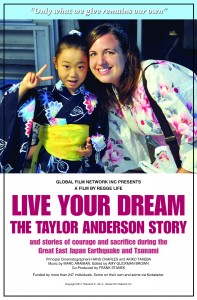
“Laced with emotional reflections, vivid photos and jovial home movies, the film walks the viewer through Taylor’s 24 years on earth and untimely end caused by the Great East Japan Earthquake and Tsunami of 2011.” (Global Film Network Inc.)
By Renay Loper (Iwate-ken, 2006-07) for JQ magazine. Renay is a freelance writer and associate program officer at the Japan Foundation Center for Global Partnership. Visit her blog at Atlas in Her Hand.
Directed by renowned filmmaker and founder of Global Film Network Regge Life, Live Your Dream: The Taylor Anderson Story is Life’s first documentary about a loss.
Best known for his features like Doubles (about Japan and America’s intercultural children), After America…After Japan (about the migration of Americans to Japan and Japanese to America) and Struggle and Success: The African American Experience in Japan, Life opens the window for the viewer to glimpse the life of Taylor Anderson (Miyagi-ken, 2008-11) through personal accounts from her loved ones. Laced with emotional reflections, vivid photos and jovial home movies, the film walks the viewer through Taylor’s 24 years on earth and untimely end caused by the Great East Japan Earthquake and Tsunami of 2011. In light of the tragedy, the film sends a message of hope, optimism and encouragement for all to follow their hearts.
The film is divided into chapters, beginning with the first, “She Took Her Time.” Jean Anderson, Taylor’s mother, reveals how in everything Taylor did, she did it at her own pace, including her birth: she was 11 days late. According to her father, Andy Anderson, Taylor grew up inquisitive, interested and easygoing, never letting anyone influence her decisions. Julia Anderson-Kerr and Jeffrey Anderson (Taylor’s sister and brother, respectively) shared what it was like to grow up with such a peaceful and patient sibling.
From as early as they could remember, Taylor was into reading, exploring and having fun. Growing up near Richmond, VA, she was first introduced to Japanese at Millwood Elementary School. Her teacher exposed her to the language, artifacts and clothing of Japan at an early age, and from that point on she was hooked. Unfortunately, when she moved on to St. Catherine’s High School, Japanese was not an option, so she continued to study on her own.
It wasn’t until her college years at Randolph-Macon College in nearby Ashland that Taylor had the opportunity to visit Japan. She traveled to Tokyo for a January course designed to expose students to the history of the city. Later that summer, Taylor taught at a Japanese language academy, where she was adored by all. It was because of Taylor’s contagious zeal for Japan that her childhood friends and classmates became interested in the country and culture as well. She exposed them to anime, manga and the films of Hayao Miyazaki, inspiring some of them to travel to Japan and explore it for themselves.
Japan Society of NY announces 7 new recovery grants
Via Japan Society of New York. Dated March 7, 2013:
New York, NY – Approaching the second anniversary of the Great East Japan Earthquake and Tsunami, Japan Society announced today seven new grants from the Japan Earthquake Relief Fund (JERF) totaling $1,779,694. Of the funds that have been donated so far, the Society has earmarked a total $11.1 million to 33 organizations in support of 41 projects on the front lines of relief, recovery and reconstruction in Tohoku.
“The earthquake and tsunami of 2011 has had a profound effect on Japanese society that will be felt for many years to come,” said Motoatsu Sakurai, Japan Society President. “We have seen tremendous progress since the triple disasters, but the hard work continues. Through the Relief Fund, Japan Society is committed to areas where support can have long-term impact: economic and community revitalization, healthcare, including mental healthcare, and youth initiatives.”
The latest JERF grant recipients are:
Ashoka Japan’s Tohoku Youth Venture provides opportunities for junior high, high school and college students who have creative and innovative ideas for revitalizing the Tohoku region to pitch their idea as part of Tohoku Youth Venture initiative, and potentially receive seed funding to put their ideas into action.
ETIC, a leading organization in Japan that trains young social and business entrepreneurs, is using its third grant from the Relief Fund to nurture and support “hubs” that emphasize human resource development to promote self-sustaining economic and community revitalization. This grant builds on previous grants to tap into ETIC’s extensive network of a younger generation of business and social entrepreneurs to identify the most vulnerable (the elderly, disabled, those with special medical needs) and match them with the critical services, as well as to match fellows with specific expertise, to small businesses, entrepreneurs and NPOs in an effort to help revitalize local economies. Read More
Tohoku Tomo: JET alum returning to Japan to document ongoing JET alum and international relief efforts in Tohoku
Wesley Julian (Miyagi-ken, 2008-10) is heading to Japan with a small film crew to make a video that will share the story of JET alums and others who have made and continue to make a difference in Tohoku, Japan.
The project is called Tohoku Tomo and just launched a Kickstarter campaign. For more information and to donate, go to:
http://www.kickstarter.com/projects/1283108911/tohoku-tomo
In the video below, Wesley, who spoke at his students’ graduation on 3/11 just before the earthquake struck, explains the project and its significance. He currently works for the Japanese Consulate in Chicago, though the Tohoku Tomo project is something he is doing independently of his work.
***********
Check out the JETAA Ottawa Newsletter
Posted by Gemma Villanueva (Fukushima-ken, 2008-11), editor for the JETAA Ottawa Newsletter. Written and photo submissions are always welcome. Please contact us at newsletter[at]jetaaottawa[dot]ca.
Hello, readers!
JETAA Ottawa is pleased to release the latest newsletter!
Please download here (16 pages – Acrobat Adobe PDF, 808kB).
Adobe Acrobat Reader: Go the “View” menu at the top; then, click “Page Display –> Two-Up Continuous” for optimal viewing.
Happy reading!
In this issue:
1. An exclusive message from His Excellency Kaoru Ishikawa, Ambassador of Japan to Canada.
2. Remembering Tohoku: As the two-year anniversary of the March 11 disaster approaches, current and former Tohoku JETs reflect upon their experiences.
– Catherine Lefrancois profiles “Eyes 4 Fukushima,” a non-profit organization spearheaded by her peers.
– Estelle Hebert helped launch “Brighter Than Tomorrow,” a fundraising campaign supporting a small fishing village in Miyagi which had been affected by the tsunami.
– Gemma Villanueva, a Fukushima JET alumna and the current JETAA Ottawa Newsletter Editor, shares how the quake changed her school.
3. Where Are They Now?: JETAA Ottawa catches up with Rigor Maglaya, who puts his own spin on the JET phrase: “ESID. Every situation is different.”
4. Getting to know the 2013-14 JETAA Ottawa Board of Directors. (Contact list available – PDF, 84KB).
… And much more!
Support Fukushima through JET Social Media Activities
A request from Lachlan Tranter (Fukushima-ken, 2011-present), CIR-PA at the Fukushima Prefecture Office. Posted by Celine Castex (Chiba-ken 2006-11), currently programme coordinator at CLAIR Tokyo.
***********
It is approaching 2 years since the 3.11 disaster and the prefecture has moved forward in many ways, but still faces a number of challenges. Many JETs around the country and JET alumni  from all around the world assisted in the immediate recovery of the three prefectures most affected by the disaster, and I know many of you want to help more. Today I am offering a chance to do so and it is as easier as clicking you mouse!
from all around the world assisted in the immediate recovery of the three prefectures most affected by the disaster, and I know many of you want to help more. Today I am offering a chance to do so and it is as easier as clicking you mouse!
In fact it is, we in Fukushima want your help spreading the word and interest in the prefecture and its strong and “genki” citizens. We want the world to know about a side of Fukushima people in our prefecture all know about, a Fukushima of beauty, of produce, of nature, of fun, of shy but brave and warmhearted people; not just a power plant.
We want people to learn that life continues on here and to set each person a challenge to learn something new about Fukushima. So here is how to help support Fukushima Prefecture, you don’t even have to get up out of your chair or Kotatsu!
Like our Facebook page and read the Japanese or English translations about Fukushima!
Head to the Prefectural YouTube channel and watch short videos about the revitalization from the disaster!
Head to our English blog and read about events, food and life in Fukushima including stories from fellow JETs!
Share these resources with friends and family back home and show that the world is still thinking about and supporting people in Fukushima!
Thank you so much for your time and support! 心より感謝申し上げます。
JET alum’s martial arts non-profit seeks to connect with Tohoku dojos for volunteering
Posted by JET alum Jennifer Leigh-Gould (Miyagi-ken, Shibata-machi, 2001-04) to the Sendai Earthquake Friends and Family Facebook group:
Out of the Dojo, Into the World™ is a newly formed non-profit community of martial artists who are very interested in helping with disaster relief and community re-building in Tohoku. I wonder if anyone can connect us with local dojos in the area and/or service projects in need of volunteers. In the meantime, please visit and like our page. We’re just starting out and eager to connect with the international community in any way that we can. (I am a former JET 2001-2004 – in Shibata Machi, Miyagi Ken).
https://www.facebook.com/outofthedojointotheworld
JETAA British Columbia Newsletter – January 2013
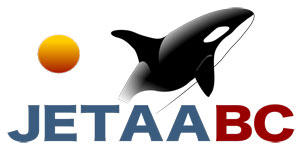 The latest issue of the JETAABC Newsletter is now available. The January issue includes a poignant article on Rikuzentakata by former Alison Dacia Brown (Iwate-ken, Rikuzentakata-shi, 2005-08) as well as an article on Photohoku, hockey in Japan, and other JET-relevant topics. JETAA BC is also one of the few remaining chapters to publish a print-layout newsletter, and they do a great job at it.
The latest issue of the JETAABC Newsletter is now available. The January issue includes a poignant article on Rikuzentakata by former Alison Dacia Brown (Iwate-ken, Rikuzentakata-shi, 2005-08) as well as an article on Photohoku, hockey in Japan, and other JET-relevant topics. JETAA BC is also one of the few remaining chapters to publish a print-layout newsletter, and they do a great job at it.
- Online Magazine Version: http://issuu.com/jetaabc/docs/newsletterv17n3/8
Tohoku Holiday Greeting Project
Thanks to JETAA USA Board of Advisors member Jessyca Wilcox for sharing this information:
Tohoku Holiday Greeting Project
American students can send holiday greetings to students in the Tohoku area of Japan devastated by the 3/11/2011 disaster. Cards, which can be written in English, will be distributed beginning December 17. Postage for a regular-size envelope is $1.05.
Send cards to:
Boys and Girls
c/o Mr. Choji Sugihara
Shoshi High School
14-18 Nakamachi, Koriyama-shi
Fukushima-ken, 963-8004
JAPAN.
NHK TV feature on “Live Your Dream: The Taylor Anderson Story”
NHK TV (English edition) recently aired a feature story on the premier screening of “Live Your Dream: The Taylor Anderson Story,” a documentary produced by filmmaker Regge Life.
Here’s the link to the video: http://www3.nhk.or.jp/nhkworld/english/movie/feature201211270915.html

